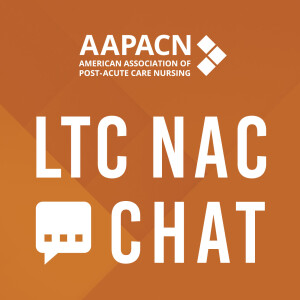
PPE: How to Improve Facility Competency and Compliance
 2020-06-09
2020-06-09
Download
Right click and do "save link as"
Personal protective equipment (PPE) is currently a topic of discussion on a global level. The COVID-19 pandemic has brought infection control procedures and the use of PPE under intense scrutiny, especially in long-term care. On a daily basis, we hear about the shortcomings of PPE supply and use, along with the lack of proper infection control in healthcare. Do not let the negative publicity paralyze you. As a leader, it is imperative to analyze what occurs in the facility and find ways to improve. By investigating competency and compliance, directors of nursing or other nurse leaders, such as infection preventionists, can improve PPE utilization in their facilities.
History of PPE
Since Leonardo DaVinci invented the first respirator to prevent contamination from chemical warfare in the 16th century, healthcare personnel (HCP) have been attempting to protect themselves from illness (Segal, 2016). As understanding of pathogens increased, PPE have evolved in response. PPE as we know it today originated in the 1970s when the Centers for Disease Control and Prevention (CDC) published the manual Isolation Techniques for Use in Hospitals. In the 1980s, PPE use intensified due to the human immunodeficiency virus (HIV) pathogen, which led to universal precautions being introduced in 1985 to prevent the transmission of infection. In addition to the gowns and gloves already being utilized, facemasks and eye shields were implemented to protect mucous membranes. In 1989, the Occupational Safety and Health Administration (OSHA) proposed a rule on occupational exposure to bloodborne pathogens. The rule on bloodborne pathogens was then finalized and published in 1991. The CDC issued an isolation guideline in 2007 which addressed PPE, including the donning and doffing procedures (Segal, 2016).
Transmission-Based Precautions and PPE
The route a pathogen spreads (air, droplets, contact, or a combination of these) dictates the transmission-based precautions that are appropriate. Once the type or types of transmission-based precaution have been selected, the PPE that will provide a barrier specific to that route of transmission is used to protect the HCP and resident. PPE may consist of face masks or respirators, gowns, gloves, face shields, and goggles.
Due to the current pandemic, the CDC issued the Interim Infection Prevention and Control Recommendations for Patients with Suspected or Confirmed Coronavirus Disease 2019 (COVID-19) in Healthcare Settings, which were updated on May 18, 2020. This guidance states facilities should use transmission-based precautions for residents with suspected COVID-19 or test-based positive results; it includes the use of gloves, gowns, face masks, goggles, and, in some cases, a N95 mask or respirator.
PPE competency
Merriam-Webster defines competency as the quality or state of having sufficient knowledge, judgment, skill, or strength. In other words, competence is based on performance and whether the HCP can properly complete the job or task. In order to achieve competency, the HCP must be educated regarding both the purpose and the procedures.
OSHA requires that each HCP know the following regarding PPE:
When it is necessary
What kind is necessary
How to properly put it on, adjust, wear, and take it off
The limitations of the equipment
Proper care, maintenance, useful life, and disposal of the equipment
In general, when observing an HCP for PPE competency, the observer should make sure the staff member is performing hand hygiene correctly, correctly determining which type of PPE to use, and donning and doffing each type of PPE correctly and in the right sequence. Below is a breakdown of what the observer should look for regarding each type of PPE to determine competency.
Type of PPE
Competence
Gloves
· Don/doff in correct sequence
· Doff inside of resident room
· Doff gloves without touching clean hand
· Discard correctly
Gown
view more
More Episodes
Quality Measures: Fundamentals of Exclusions
 2024-10-02
2024-10-02
 2024-10-02
2024-10-02
MDS Tools to Make the NAC’s Job Easier
 2024-04-30
2024-04-30
 2024-04-30
2024-04-30
Getting Care Area Assessments Back on Track
 2024-01-30
2024-01-30
 2024-01-30
2024-01-30
012345678910111213141516171819
Create your
podcast in
minutes
- Full-featured podcast site
- Unlimited storage and bandwidth
- Comprehensive podcast stats
- Distribute to Apple Podcasts, Spotify, and more
- Make money with your podcast
It is Free
- Privacy Policy
- Cookie Policy
- Terms of Use
- Consent Preferences
- Copyright © 2015-2024 Podbean.com




